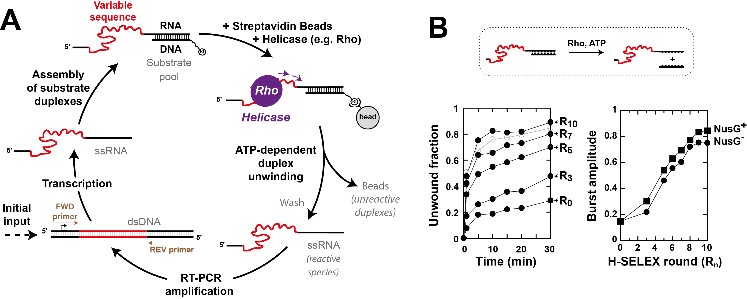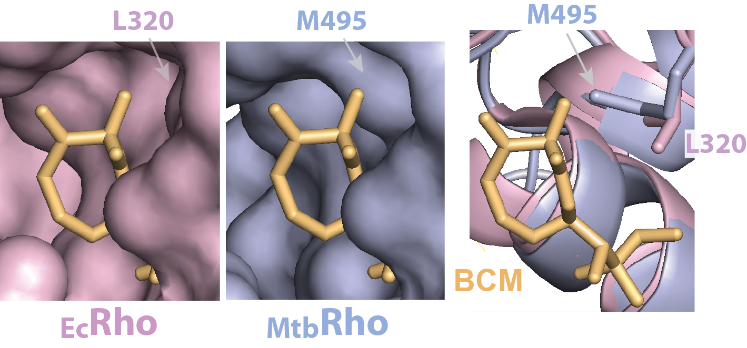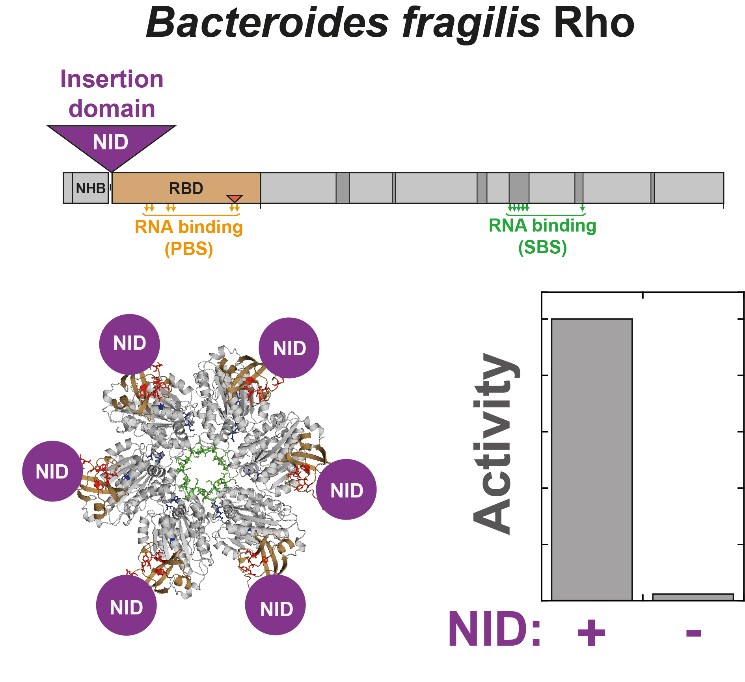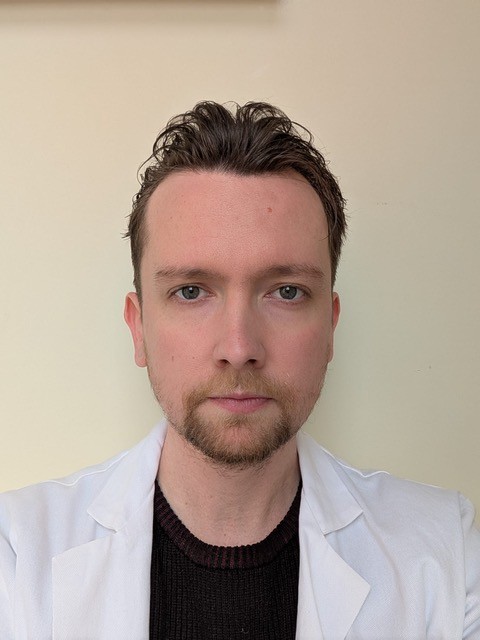Typologie d'actualités: Group RNA Remodeling Factors & Mechanisms
A new regulatory mechanism involved in the bacterial response to cold shock

Cold shock is a common stress for bacterial pathogens inhabiting warm-blooded hosts. It occurs upon abrupt release from the host into the comparatively cold environment. Understanding how pathogens cope with cold shock is crucial to define how they survive on contaminated surfaces and spread to new hosts.
The‘RNA remodeling’ team and I2BC colleagues discovered that transcription termination factor Rho is a crucial player in the bacterial cold shock response (CSR), challenging the prevalent view that the CSR is mostly a posttranscriptional program. Temperature-sensing mRNA switches either allow (at 37°C) or prevent (at 15°C) Rho-dependent termination of the transcription of cold shock genes. During cold acclimation, the cold shock proteins accumulate until they bind to their mRNAs and switch them back into conformations prone to Rho action, thereby providing negative feedback control of their own expression. This regulatory loop works alongside the established posttanscriptional mechanisms to ensure tight and quick regulation of the cold shock genes.
This discovery published in the journal Molecular Cell illustrates the complexity of the bacterial stress responses and highlights Rho as a promising therapeutic target. It was reported by CNRS Chimie on its website.
Référence :
Rho-dependent transcriptional switches regulate the bacterial response to cold shock
Mildred Delaleau, Nara Figueroa-Bossi, Thuy Duong Do, Patricia Kerboriou, Eric Eveno, Lionello Bossi, & Marc Boudvillain*
Molecular Cell https://doi.org/10.1016/jmolcel.2024.07.034
2023, November 10 : Seminar of Dr Stéphanie MARSIN et Magali NOIRAY

A versatile new approach to seek constitutive or conditional helicase substrates at global scale

The CNRS Institute of Chemistry has reported this new original screening approach on its website
Référence
Delaleau M., Eveno E., Simon I., Schwartz A & Boudvillain M.
A scalable framework for the discovery of functional helicase substrates and helicase-driven regulatory switches
PNAS 2022

A new mechanism of antiobiotic resistance

The bacterial Rho factor is a molecular motor that induces genome-wide transcription termination. Rho is essential in many species, including in Mycobacterium tuberculosis where inactivation of the rho gene leads to rapid death. Nevertheless, the Rho factor of M. tuberculosis [MtbRho] displays idiosyncrasies, including resistance to the antibiotic bicyclomycin [BCM], which remain unexplained. To identify the molecular origin of these idiosyncrasies, we solved the structure of MtbRho by cryo-EM at 3.3 Å. This atomic structure notably reveals a leucine → methionine substitution that creates steric hindrance in the binding pockets of BCM, close to the ATPase sites, thereby conferring resistance to BCM at the expanse of molecular motor efficiency. Our work contributes to explain the unusual properties of MtbRho and provides groundwork for the development of new antibiotics.
When a non-conserved protein domain becomes essential

Rho-dependent termination of transcription is a critical regulatory mechanism specific to bacteria. In a subset of species including most Actinobacteria and Bacteroidetes, the Rho factor contains a large, poorly conserved N-terminal insertion domain (NID) of cryptic function. Through the first characterization of an actinobacterial Rho factor containing a very large NID (~40% of total mass), we show that such a non-conserved protein domain can be essential for activity. Without NID, the Rho factor of Bacteroides fragilis (BfRho) indeed cannot induce transcription termination and displays a reduced affinity for RNA. Intriguingly, the presence of a NID in BfRho is not correlated to the lack of residues or motifs deemed essential in NID-less Rho factors from evolutionary distinct species. The NID requirement is probably linked to the coevolution of partner feature(s) such as lineage-specific RNA polymerase domains and/or low G+C content of the B. fragilis transcriptome. Our data thus highlight that ‘essential function’ does not always rhyme with ‘structural conservation’.
Simon I., Delaleau M., Schwartz A., Boudvillain M.
A Large Insertion Domain in the Rho Factor From a Low G + C, Gram-negative Bacterium is Critical for RNA Binding and Transcription Termination Activity
Journal of Molecular Biology (2021) 433 (15) 167060 - Doi : 10.1016/j.jmb.2021.167060
RNA Remodeling Proteins, Methods and Protocols

The second edition of the book “RNA Remodeling Proteins, Methods and Protocols” edited by Marc Boudvillain has just been published.
This volume of the “Methods in Molecular Biology” series compiles new methods to study RNA-protein complexes and the mechanisms leading to their structural remodeling. The volume includes 4 chapters written by CBM researchers and ideally complements the first edition published in 2015.


